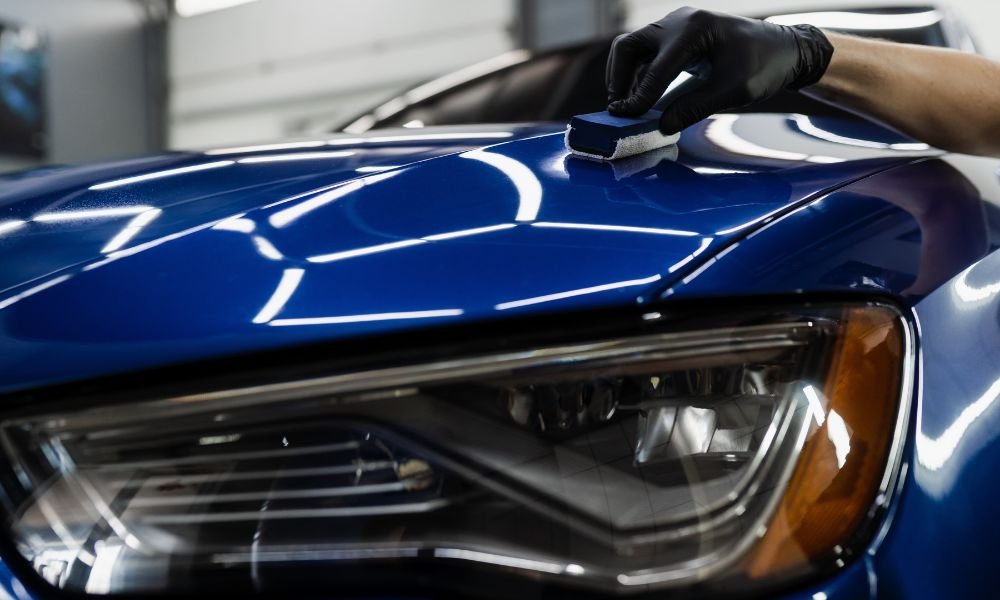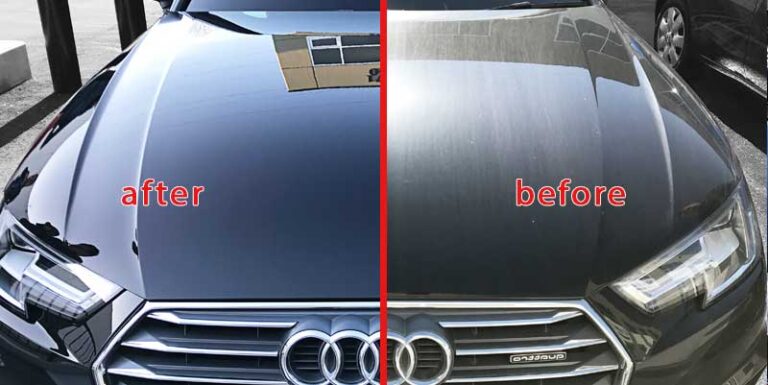How Ceramic Coating Philadelphia Guards Against UV Rays and Environmental Damage
How Ceramic Coating Philadelphia Guards Against UV Rays and Environmental Damage
Blog Article
Why Ceramic Coating Is the Ultimate Option for a Remarkable Complete
Ceramic layer has arised as a leading remedy for those seeking a perfect finish for their automobiles, thanks to its remarkable toughness and safety functions. What elements absolutely established ceramic covering apart?
What Is Ceramic Finishing?

When applied appropriately, ceramic coating creates a hydrophobic surface that repels water and dust, making it much easier to clean and preserve. Unlike traditional waxes or sealants, which usually supply brief defense, ceramic finishings can last for a number of years, relying on the product top quality and application technique. The process of applying ceramic finish calls for meticulous preparation, including detailed cleansing and sometimes repaint correction, to make certain optimum bonding and performance.
Ceramic layers are not limited to automotive surfaces; they can likewise be used on various products, including glass, metal, and plastics, providing a functional remedy for enhancing security. Generally, ceramic finishing represents a significant advancement in surface security technology, integrating both functional and aesthetic advantages for a large array of applications.
Advantages of Ceramic Coating
While numerous surface area security alternatives exist, the advantages of ceramic layer stand out as a result of its special properties and resilient performance. Among the main benefits is its remarkable sturdiness. Ceramic Coating Philadelphia. Unlike typical wax or sealers that require regular reapplication, ceramic finishes offer a durable layer that can last for numerous years, considerably minimizing upkeep initiatives
An additional significant benefit is improved defense versus environmental contaminants. Ceramic finishings develop a hydrophobic surface that fends off water, dirt, and different contaminants, making it simpler to clean. This attribute not only preserves the car's appearance but likewise decreases the threat of rust and oxidation, specifically in extreme climate condition.
Additionally, ceramic coatings offer superior resistance to UV rays, stopping fading and destruction of paint with time. This UV security is critical for maintaining the visual value of automobiles and surface areas revealed to direct sunshine.
Furthermore, the shiny finish attained with ceramic layer enhances the general aesthetic appeal, giving surfaces a showroom-quality shine. On the whole, ceramic coatings stand for a significant development in surface security modern technology, supplying long-lasting benefits that deal with both functional and aesthetic requirements.
How It Functions
Comprehending the science behind ceramic coatings exposes exactly how they give such impressive defense and long life. At its core, a ceramic finishing is a fluid polymer that chemically bonds with the vehicle's manufacturing facility paint. This bonding develops a protective layer that is both hydrophobic and oleophobic, repelling water, dirt, and oil. The primary component of many ceramic finishes is silicon dioxide (SiO2), which is derived from quartz. This compound adds to the finishing's solidity and resistance to scratches, UV rays, and ecological contaminants.
The application process entails numerous actions, including surface preparation, which is critical to attaining ideal bond. Once applied, the finish undergoes a healing process, throughout which it sets and creates a semi-permanent bond with the paint surface area. This bond is that site what differentiates ceramic layers from typical waxes and sealers, giving a longer-lasting safety obstacle that can sustain for many years.
Furthermore, the density of the finish can improve its protective top qualities, making certain that it can endure rough conditions. Ultimately, the science of ceramic finishings incorporates sophisticated materials with cutting-edge application techniques to provide an unequaled degree of protection and aesthetic enhancement for lorries.
Contrast With Standard Approaches
The benefits of ceramic layers come to be especially evident when contrasted to conventional paint defense techniques such as waxes and sealants. While waxes provide a short-lived sparkle, usually lasting a couple of weeks to a number of months, ceramic layers provide a long-lasting safety layer that can sustain for a number of years. This sturdiness substantially minimizes the frequency of click here for more info reapplication, making ceramic finishings an extra affordable solution over time.
Furthermore, standard methods often call for comprehensive preparation and numerous applications to achieve an acceptable degree of protection. On the other hand, ceramic finishes bond at a molecular degree with the car's surface, creating a durable guard versus ecological contaminants like UV rays, acid rain, and road salts. This bond boosts the automobile's resistance to scrapes and swirl marks, which are prevalent with conventional waxes and sealers.
Additionally, the hydrophobic residential properties of ceramic coatings ward off water and dirt, bring about much easier cleansing and maintenance. In contrast, wax and sealant-treated surface areas can bring in grime, necessitating more frequent washing - Ceramic Coating Philadelphia. In general, ceramic finishes not just supply exceptional security but additionally supply a more visually appealing and enduring finish, developing them as the recommended choice for critical automobile owners
Application and Maintenance Tips

Using a foam applicator, use the finishing in small sections, adhering to the manufacturer's standards concerning density and overlap. Allow adequate healing time between coats, typically 24 hr, to guarantee appropriate bonding. After application, it is essential to avoid exposure to water or rough aspects Visit Website for at least a week to enable the layer to fully treat.
For upkeep, clean the vehicle regularly with pH-balanced soaps and stay clear of rough products. Touchless auto laundries are recommended to minimize damaging. Additionally, making use of a ceramic maintenance spray can improve the covering's hydrophobic residential properties and long life. Normal examinations for any kind of indicators of wear will certainly aid maintain the layer's stability and maintain that beautiful coating.
Final Thought
In final thought, ceramic finishing arises as an exceptional option for achieving a remarkable automotive surface. By developing a robust bond with manufacturing facility paint, ceramic finish properly guards against scrapes, UV rays, and environmental impurities.

Report this page